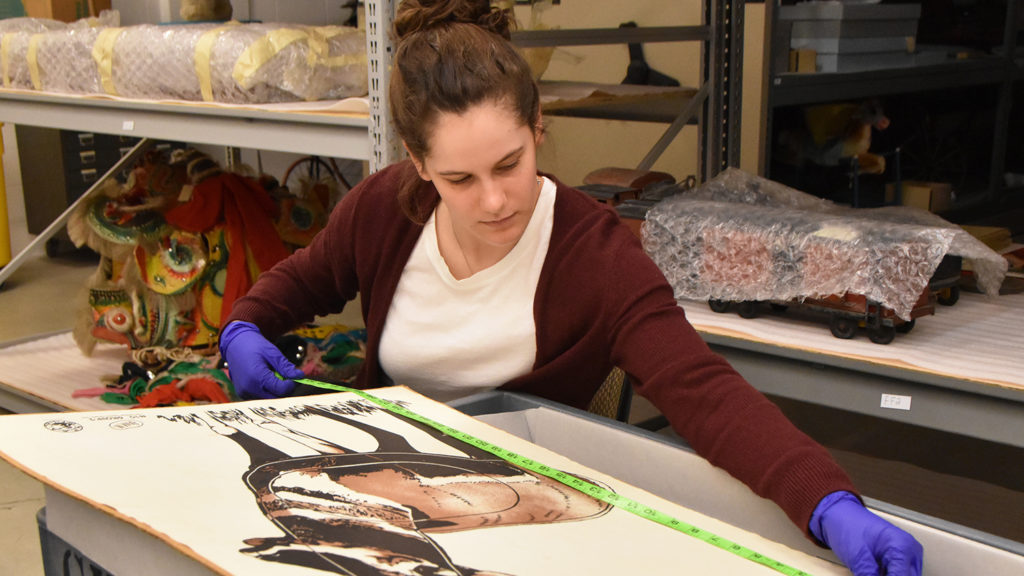Elise Schrader, a Fort Wayne resident and senior at Ball State University, is spending the Fall semester as an intern working behind the scenes in the collections department of the Indiana State Museum.
“Through the internship, I am hoping to gain a better understanding of how museums function and the work it takes to maintain galleries and rotate exhibits for the public,” said Schrader, a history major with a concentration in public history.
“Ball State is one of the few universities that offers a public history program, so without Ball State, I would not have had this internship opportunity. The classes that I have taken and the professors who have taught them only furthered my passion for the subject and made me confident that history is something I want to pursue for a very long time.”
Schrader works in the collections department, which is responsible for the care and keeping of artifacts both within the museum and historic sites around the state. Currently, she is cataloging objects in the pop culture collection into a database with in-depth descriptions and photographs, which allows curators to virtually search through 200,000 items.
Schrader has worked with artifacts of all kinds, from vacuuming historic clothing in the museum’s Color of Style exhibit, to cataloging a lunar rock brought back from the Apollo 17 mission.
“The lunar rock was accompanied by a small cloth replica of the Indiana state flag,” Schrader said, “which was on board Spacecraft America and made it into outer space, onto the moon, and back to Indiana. To know that Indiana was a part of that mission, even in a tiny way, reminded me that each artifact has a story and significance to be shared.”
After graduating from Ball State in May, Schrader plans to attend graduate school to continue studying public history and hopes to eventually work in a museum, researching objects and contributing to exhibition design.
“By studying history and getting my degree in public history, I will have the opportunity to share the side of history few people get to learn about,” Schrader said, “and I will be helping people to understand that we are a product of what came before us.
“Despite what many people may think about history from their classes, there is more to it than just dates and names. When a person really looks into what history is, it is the collections of hundreds of thousands of stories about how people lived their lives, and in the end, how their lives are still impacting society today.”

